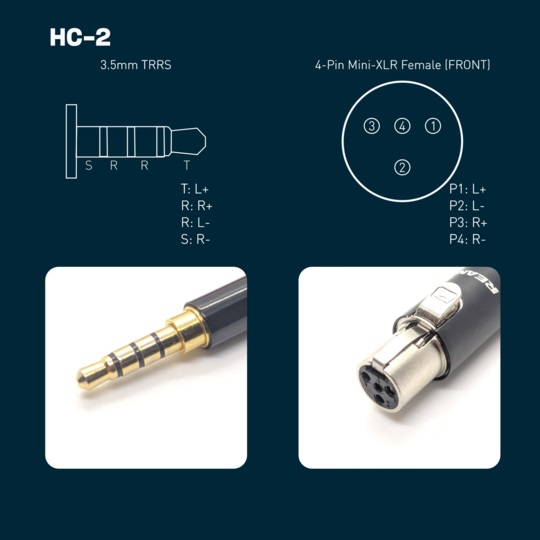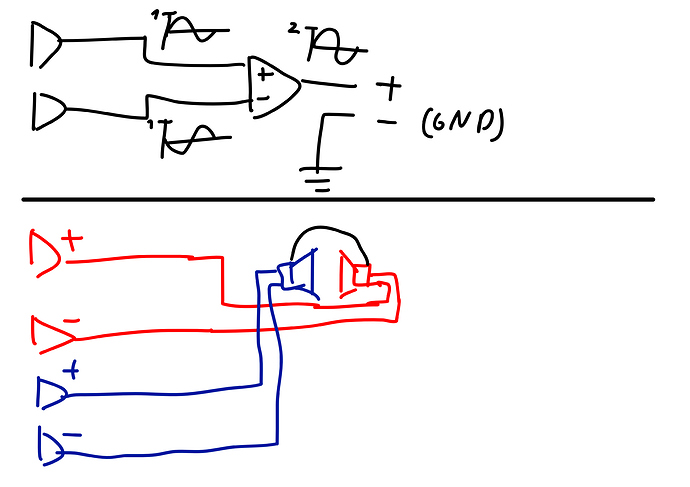under normal logic a circuit needs to be a closed loop for any current to flow. as far as i understand in an unbalanced setting some voltage will be applied to the signal wires (L+, R+) and current is sent back via the shared ground wire (GND). so in each case we have a signal (+) and a ground (GND) for the return path. in a balanced setting, there are two signals (+ and -), but nothing is specifically designated as a ground wire. at the driver site, these two signals are combined to cancel out the noise. the most logical explanation for how this would work in practice is that the amplifier would apply two voltages to the two signal paths and the voltage differential causes current to flow (this would also be an easy way to do +A - (-A)). however this doesn’t quite make sense when we go back to the unbalanced setting. if the ground voltage is kept constant, wouldn’t it pick up the same noise at the location of the headphone driver and everything would get cancelled out?
tldr my question is really: are balanced headphones truly balanced or is it just marketing bullshit for separate grounding by applying -voltage and thus effectively doubling the voltage/current? it seems to me that to get the desired balanced effect you would need 6 conductors, 3 per channel (+, -, and GND).
Your mostly correct.
Just taking one channel
Single ended is
R + Noise - 0(GND) Volts = R + Noise
Balanced is
(R+Noise) - (-R + Noise) = 2R
Note this really is irrelevant on a headphone Wire where ground is just the supplied ground from the amp so it probably has the same Noise as the signal line, so it will cancel.
Between devices it makes more sense, because ground is actually a thing, at both ends of the wire.
The primary advantage of using balanced to a headphone, is the amp doesn’t have to convert an internally balanced signal to SE IF the amp is balanced.
I’m not sure if this is entirely relevant to the question/conversation, but I’m hoping it’s close enough to find an answer to my question. I recently purchased a pair of HD6XXs and I came across this listing for a Hart cable for it. The listing emphasizes that it’s a “balanced TRRS” cable that will only work with balanced amps. I thought the “balanced” aspect was that there’s a different connection on each ear cup, but the TRRS end is different from the TRS stock cable. So am I correct in assuming that this cable will not work my with Heresy amp (or incoming L30)?
“Balanced” is an incorrect description. It’s like calling the 4 wires required to connect two stereo speakers “balanced”. The only thing between the amp and the headphones that can be balanced is the amplifier itself. A balanced amp is in essence 2 amps instead of 1. One drives the left driver, the other the right. While this ends up giving you more power, it also doubles the distortion.
If I’ve incorrectly stated anything, please someone correct me.
The plug / connector is different. TRS is a 3-pole and TRRS is a 4-pole. Normally it isn’t an issue for cables that use a microphone (like for most in-line mics on IEMs or other portables), it will simply just prevent the microphone from working if you plug it into a normal TRS jack, as the microphone part of the ring would be shorted.
Seeing as this is a Hart-Audio Cable, I’m assuming the diagram would be the same as on the HC-2:
I would assume this causes issues as it would short the (R-)? Someone please correct me if I’m wrong. It will however work on something like the ifi xDSD that has their S-Balanced connector, which supports TRRS cables.
Thanks for the input. That is what I was thinking too, based on the diagram. I just didn’t realize that the TRRS design could be used for SE balanced. I’m going to continue to assume that it wouldn’t work for my current setup unless someone corrects me. Thanks, Ahobaka.
(I apologize if this is considered hijacking your thread, icertia. I’ve just had this questions for a bit and the “4-conductor balanced” in the title made me think it might be relevant.)
Balanced means there is the signal, and the inverse (upside down) of the signal.
In that case, noise would be induced in the same direction on both signals. Adding them together cancels the noise and doubles the amplitude.
“Balanced” in a headphone means instead of going until the end in the black part of the image below, you just pipe the signals straight into the headphone.
Excuse the crappy drawing, my circuit drawing software would not start…

